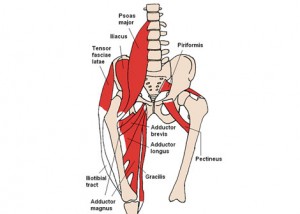Anterior Position Urged in Hip Replacement
Biloine Young • Fri, Oct 5th, 2012
Hip replacements from the anterior position are safer alternatives to the traditional posterior hip replacement, according to Arizona Orthopaedic Associates, a leading group of Arizona surgeons located in Phoenix.
The group introduced the anterior hip approach to Arizona and has completed more than 1,200 such surgeries. With hip replacements almost doubling in the last decade, they believe that the anterior hip replacement approach will become the preferred procedure.
The anterior hip replacement, as performed by Arizona Orthopaedic Associates, utilizes a $100,000 HANA table that enables physicians to replace the hip through a single 4- to 5-inch incision without detaching or cutting muscles. The table allows for a positioning option not possible with conventional tables and intraoperative X-ray ensures precise placement of the hip. The result, they claim, is reduced pain, less muscle trauma, a lower risk of dislocation and a shorter hospital stay. They say that it can also cut recovery times by up to three months.
David Ott, M.D., of Arizona Orthopaedic Associates, noted,
There’s a learning curve with any new procedure. That doesn’t mean the surgery is inherently more dangerous, it just means some doctors are behind the curve. In fact, most medical advances occur this way. Often what was once a new innovation and thought to be risky or dangerous because it challenged the traditional technique, is now the standard of care.
Ott said the anterior approach rarely requires a transfusion and that Arizona Orthopaedic Associates surgeons have discontinued recommending that their patients donate blood prior to their surgeries because they have found it not to be necessary.
Critics of the procedure warn that there is an inherent danger in that a blood vessel can be nicked leading to significant artery injury. Ott counters that, “The femoral arteries are very distant and nowhere near the field of surgery. I know of no one who has had any major blood vessel injuries. The femoral nerve is closer during the anterior approach but it’s not nearly as close as the sciatic in the traditional posterior approach,” he said.
According to Ott, the use of the anterior approach has patients walking the same day as surgery and returning to full mobility within 2-8 weeks, instead of the typical 2-4 months needed after traditional surgery.
Source: http://ryortho.com/largeJoints.php?news=2253_Anterior-Position-Urged-in-Hip-Replacement






